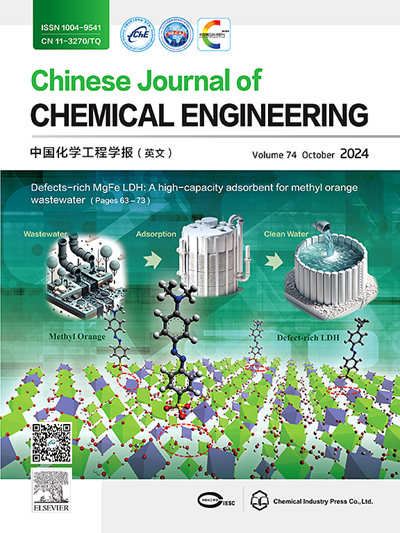Enhancing wastewater treatment efficiency with stereoscopic hydrogel evaporators and renewable energy integration for sustainability
IF 3.7
3区 工程技术
Q2 ENGINEERING, CHEMICAL
引用次数: 0
Abstract
Enhancing wastewater treatment efficiency through innovative technologies is paramount in addressing global environmental challenges. This study explores utilizing stereoscopic hydrogel evaporators combined with renewable energy sources to optimize wastewater treatment processes. A cross-linked super absorbent polymer (SAP) hydrogel was synthesized using acrylic acid and 2-hydroxyethyl methacrylate monomers and integrated with a light-absorbing carbon membrane to form a solar-assisted evaporator (MSAP). The MSAP achieved a high evaporation rate of 3.08 kg m−2·h−1 and a photothermal conversion efficiency of 94.27%. It demonstrated excellent removal efficiency for dye-polluted wastewater, significantly reducing concentrations of pollutants. The MSAP maintained high performance in outdoor conditions, showcasing its potential for real-world applications. This approach, incorporating both solar and wind energy, significantly boosts water evaporation rates and presents a promising, eco-friendly solution for sustainable wastewater treatment within the circular development framework.

利用立体水凝胶蒸发器和可再生能源集成提高废水处理效率,实现可持续发展
通过创新技术提高废水处理效率对于应对全球环境挑战至关重要。本研究探索利用立体水凝胶蒸发器结合可再生能源优化废水处理工艺。以丙烯酸和甲基丙烯酸2-羟乙基酯为单体合成交联高吸水性聚合物(SAP)水凝胶,并与吸光碳膜结合,形成太阳能辅助蒸发器(MSAP)。MSAP的蒸发速率为3.08 kg m−2·h−1,光热转换效率为94.27%。对染料污染废水表现出优异的去除效果,显著降低污染物浓度。MSAP在室外条件下保持了高性能,展示了其在实际应用中的潜力。这种方法结合了太阳能和风能,大大提高了水的蒸发速度,并为循环发展框架内的可持续废水处理提供了一种有前途的、环保的解决方案。
本文章由计算机程序翻译,如有差异,请以英文原文为准。
求助全文
约1分钟内获得全文
求助全文
来源期刊

Chinese Journal of Chemical Engineering
工程技术-工程:化工
CiteScore
6.60
自引率
5.30%
发文量
4309
审稿时长
31 days
期刊介绍:
The Chinese Journal of Chemical Engineering (Monthly, started in 1982) is the official journal of the Chemical Industry and Engineering Society of China and published by the Chemical Industry Press Co. Ltd. The aim of the journal is to develop the international exchange of scientific and technical information in the field of chemical engineering. It publishes original research papers that cover the major advancements and achievements in chemical engineering in China as well as some articles from overseas contributors.
The topics of journal include chemical engineering, chemical technology, biochemical engineering, energy and environmental engineering and other relevant fields. Papers are published on the basis of their relevance to theoretical research, practical application or potential uses in the industry as Research Papers, Communications, Reviews and Perspectives. Prominent domestic and overseas chemical experts and scholars have been invited to form an International Advisory Board and the Editorial Committee. It enjoys recognition among Chinese academia and industry as a reliable source of information of what is going on in chemical engineering research, both domestic and abroad.
 求助内容:
求助内容: 应助结果提醒方式:
应助结果提醒方式:


